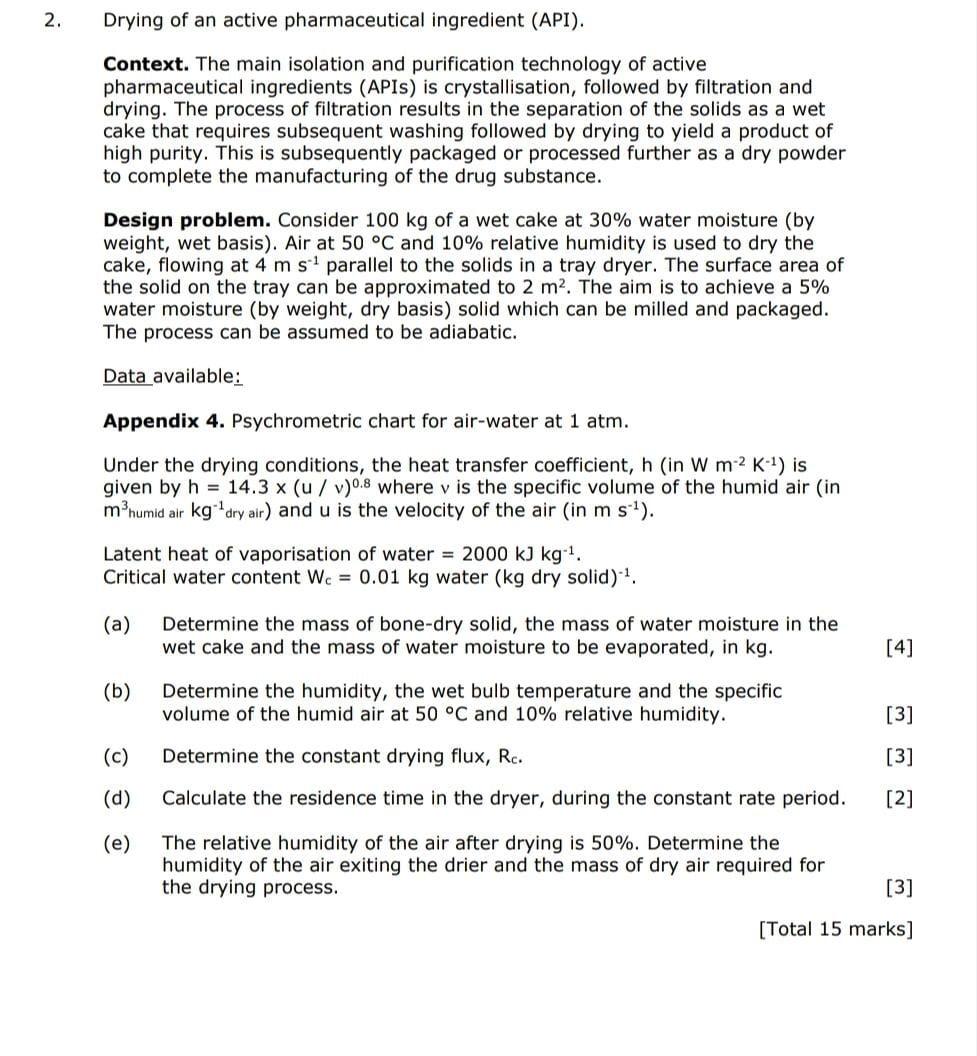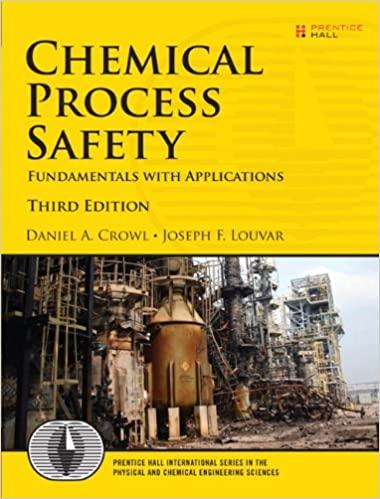Answered step by step
Verified Expert Solution
Question
1 Approved Answer
please do it fast I ill upvot you 2. Drying of an active pharmaceutical ingredient (API). Context. The main isolation and purification technology of active

please do it fast I ill upvot you
2. Drying of an active pharmaceutical ingredient (API). Context. The main isolation and purification technology of active pharmaceutical ingredients (APIS) is crystallisation, followed by filtration and drying. The process of filtration results in the separation of the solids as a wet cake that requires subsequent washing followed by drying to yield a product of high purity. This is subsequently packaged or processed further as a dry powder to complete the manufacturing of the drug substance. Design problem. Consider 100 kg of a wet cake at 30% water moisture (by weight, wet basis). Air at 50 C and 10% relative humidity is used to dry the cake, flowing at 4 m s parallel to the solids in a tray dryer. The surface area of the solid on the tray can be approximated to 2 m2. The aim is to achieve a 5% water moisture (by weight, dry basis) solid which can be milled and packaged. The process can be assumed to be adiabatic. Data available: Appendix 4. Psychrometric chart for air-water at 1 atm. Under the drying conditions, the heat transfer coefficient, h in W m2 K-1) is given by h = 14.3 x (u / v)0.8 where v is the specific volume of the humid air (in mhumid air kg dry air) and u is the velocity of the air (in m s). Latent heat of vaporisation of water = 2000 kJ kg 1. Critical water content Wc = 0.01 kg water (kg dry solid)-1. (a) Determine the mass of bone-dry solid, the mass of water moisture in the wet cake and the mass of water moisture to be evaporated, in kg. [4] (b) [3] (c) Determine the humidity, the wet bulb temperature and the specific volume of the humid air at 50 C and 10% relative humidity. Determine the constant drying flux, Rc. Calculate the residence time in the dryer, during the constant rate period. [3] (d) [2] (e) The relative humidity of the air after drying is 50%. Determine the humidity of the air exiting the drier and the mass of dry air required for the drying process. [3] [Total 15 marks]Step by Step Solution
There are 3 Steps involved in it
Step: 1

Get Instant Access to Expert-Tailored Solutions
See step-by-step solutions with expert insights and AI powered tools for academic success
Step: 2

Step: 3

Ace Your Homework with AI
Get the answers you need in no time with our AI-driven, step-by-step assistance
Get Started


